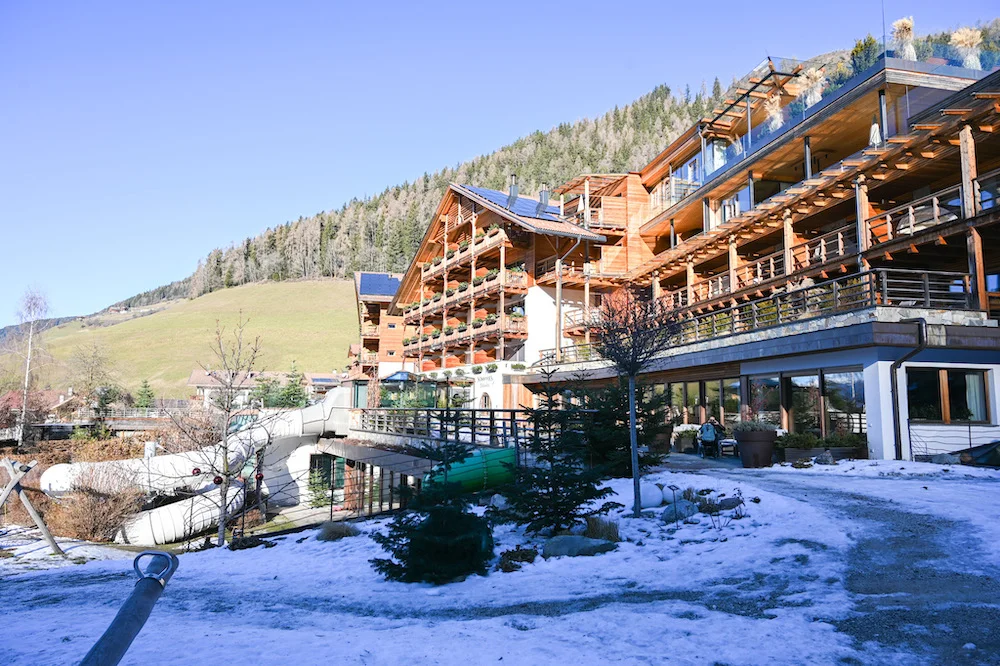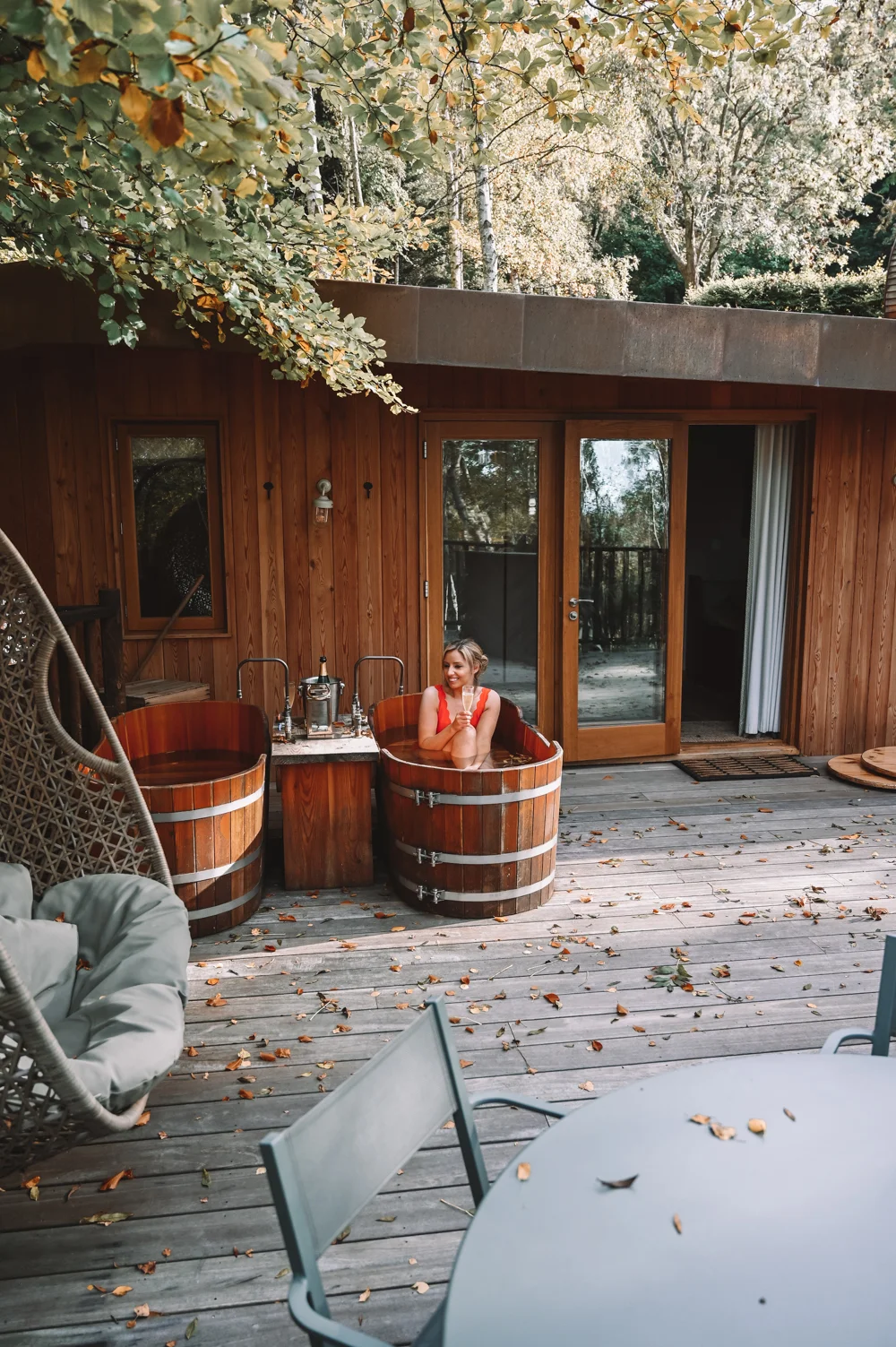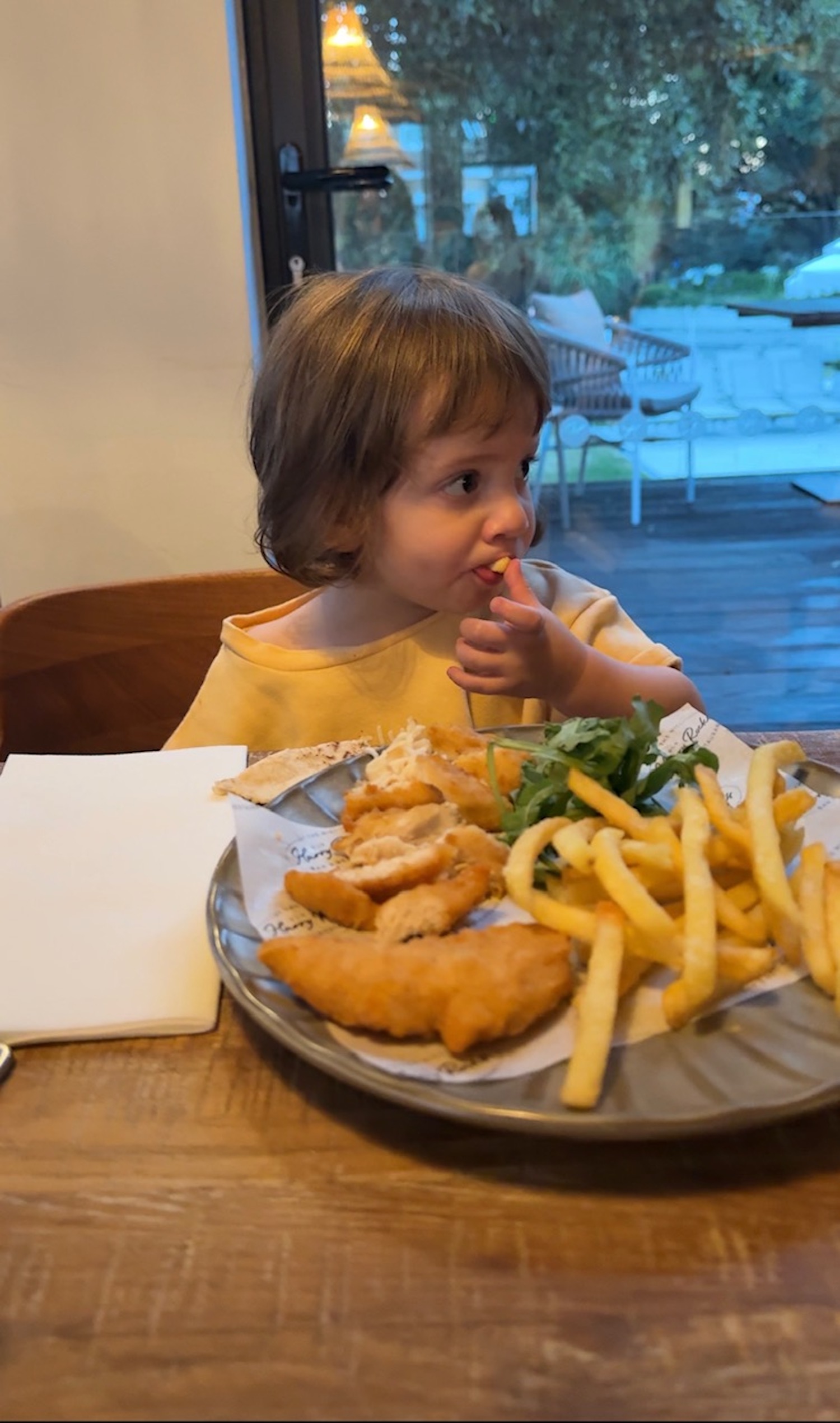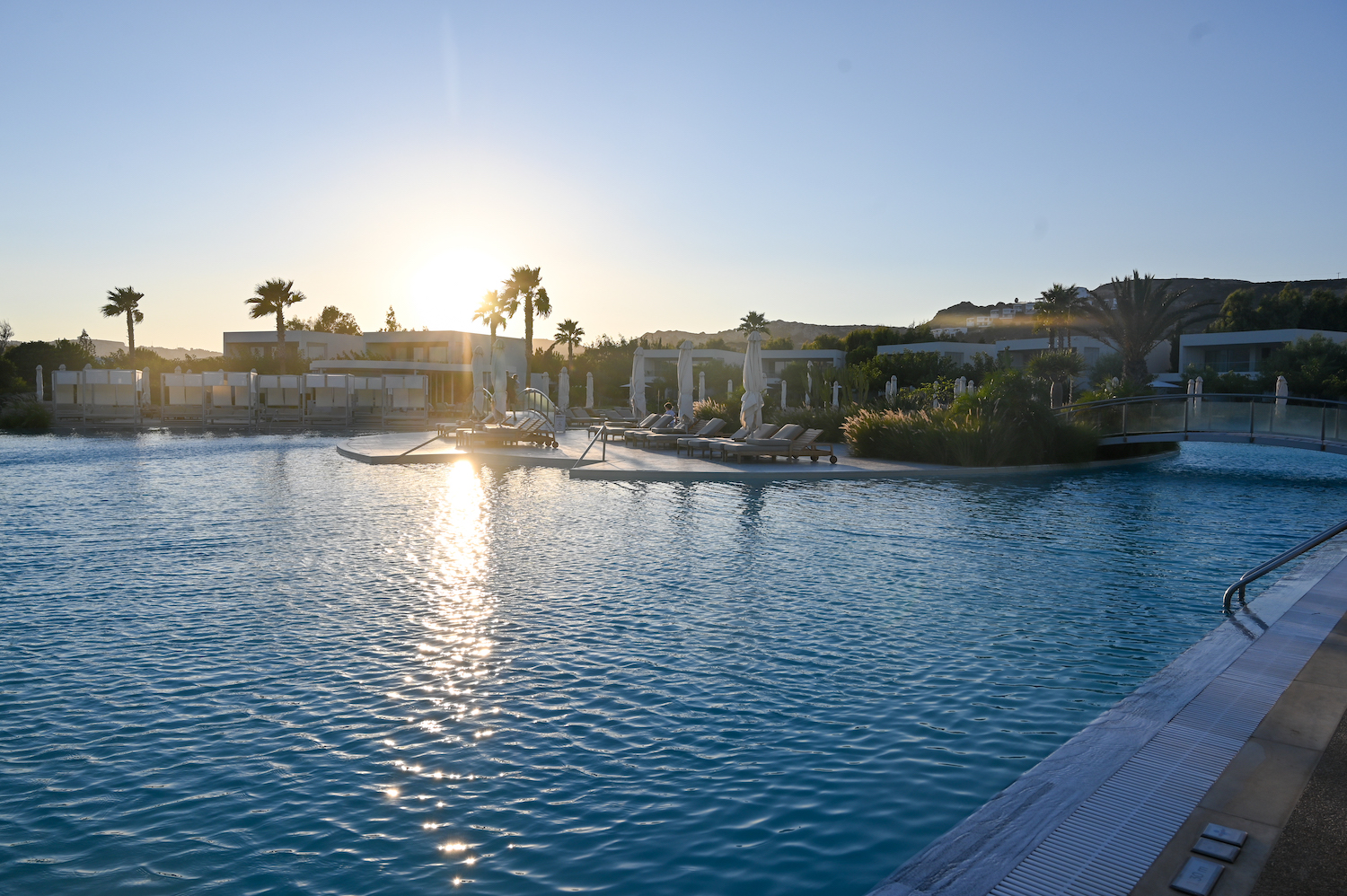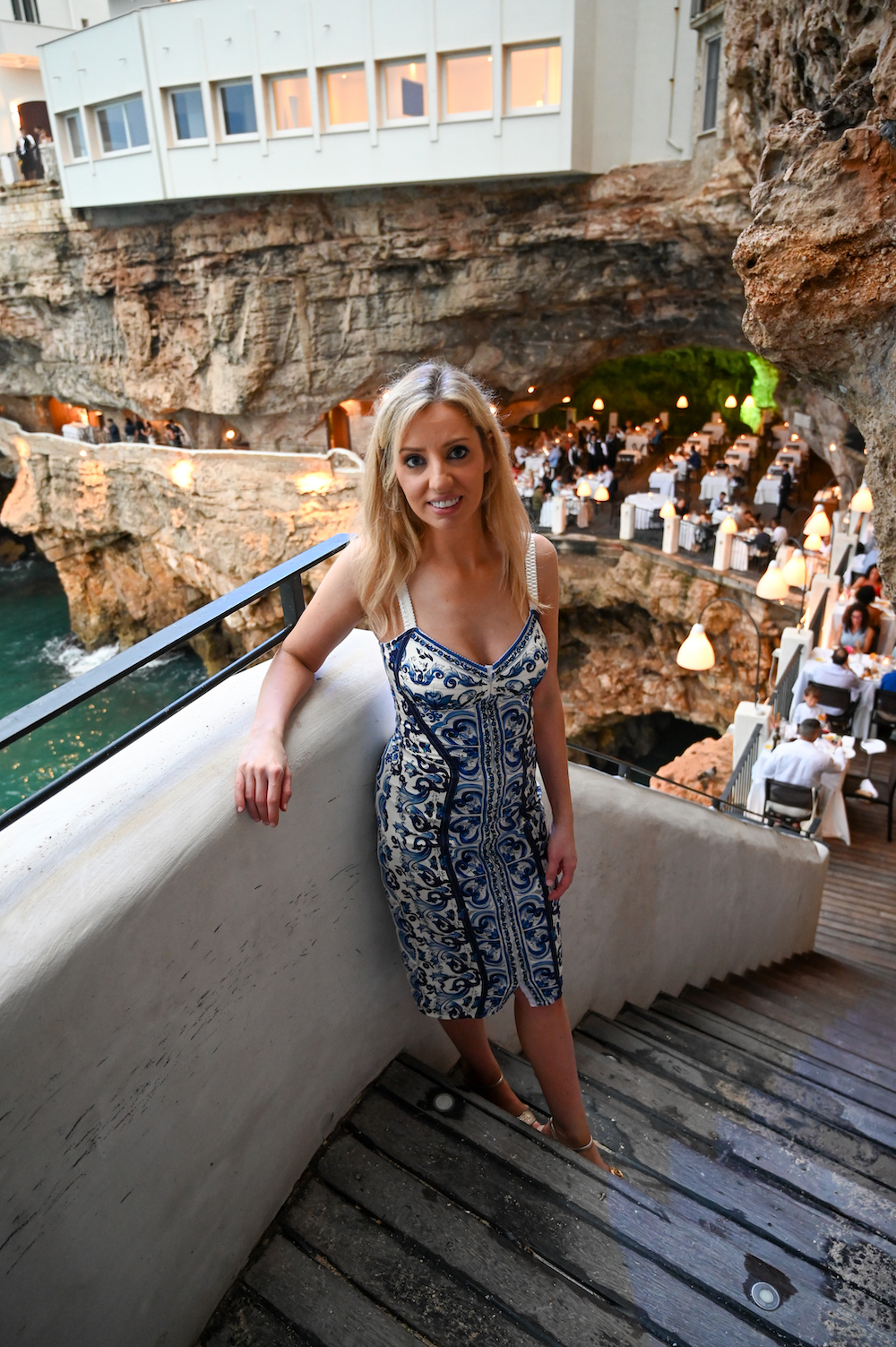In my mind the Champagne region in the Northeast of France is a magical place. I imagined champagne runs from the taps, diamonds sparkle in the sky in the place of stars and the streets are paved with gold. It was a place I’d always dreamed of visiting and an invitation on a press trip to visit two highly esteemed vineyards was the perfect opportunity.
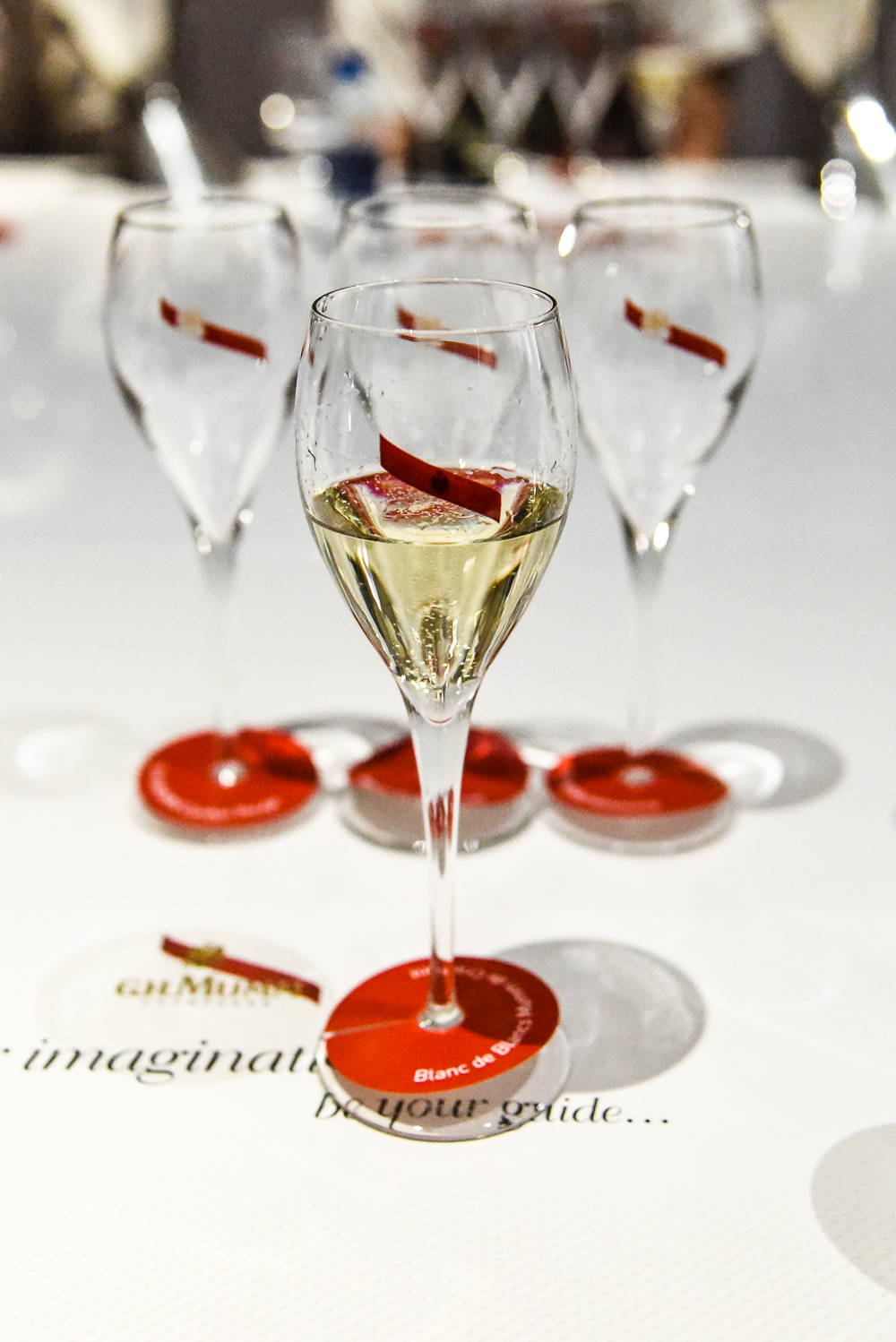
We arrived in Paris and immediately caught the TGV for a very short thirty-five minute journey to Reims, one of the main cities in the Champagne-Ardenne region. I stepped off the train, it was a little cold and drizzly, certainly no diamonds in the sky or gold on the road but I was incredibly excited to be in the birthplace of my favourite drink! Today we would be visiting Maison Mumm, the leading champagne house in France founded in 1827 by three German brothers named Gottlieb, Jacobus and Philipp Mumm. 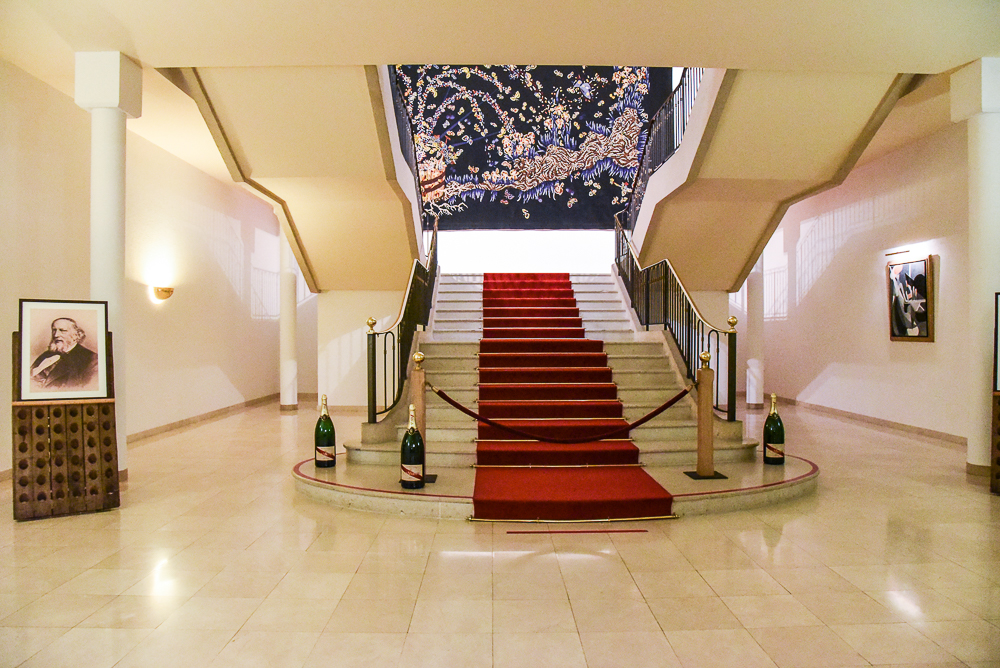
A grand entrance with a sweeping staircase was the perfect introduction to the house. Mumm pride themselves on the extremely high quality of their champagne, their motto being ‘Only the best.’ First we were taken seven metres underground where our guide started to explain the process. 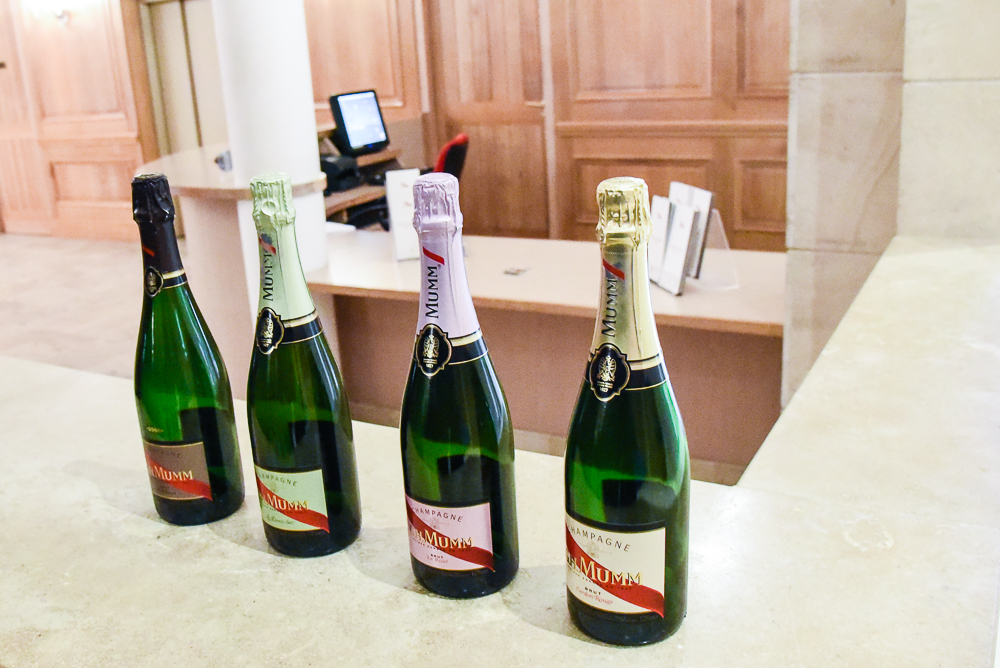
As you know, I love celebrating every moment, and that is the central ethos of Maison Mumm. It’s a champagne that’s all about celebration and victory but also pushing boundaries and striving to achieve. The Cordon Rouge with its signature red sash truly embodies the spirit of the house and the levels of quality and excellence that it upholds. For many years Mumm has been the champagne of choice for celebrating incredible feats such as the French expedition to the Antarctic in 1904 and Mumm are also now the official partner of Formula E, the world’s first electric racing championship.
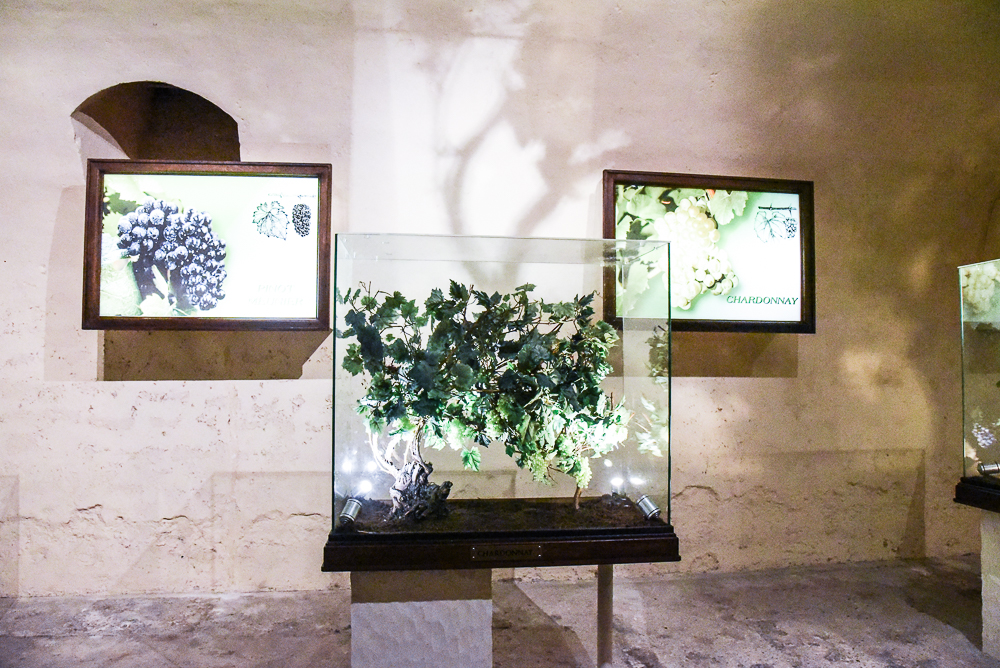
The appellation ‘champagne’ is often applied too easily to sparkling wines but actually it is illegal to label a product with the name if it isn’t produced in the Champagne region and made in a certain way. The primary grapes used in champagne are Chardonnay, Pinot Noir and Pinot Meunier and Maison Mumm has nearly 218 hectares of vineyards. That’s a lot of grapes – and they are rated 98% on the champagne quality scale. The grapes are picked between September and mid-October and according to the champagne appellation rules these must be picked by hand meaning Mumm employs over 1,000 grape pickers! After they are picked, the grapes are pressed and the juice is extracted and then it goes through the ‘racking’ process to get rid of any excess residue or skin.
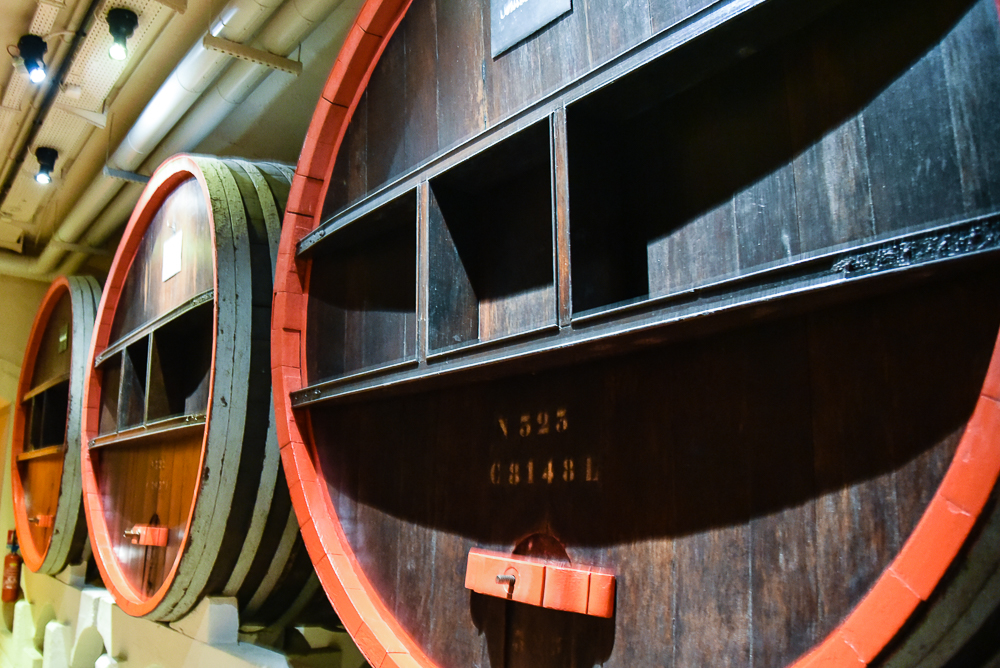
The resulting juice from the grapes is known as ‘must’ and is kept in the huge vats at twenty degrees for the fermentation process to occur. Massive concrete containers house the must while yeast converts the sugar to alcohol and carbon dioxide so that the must becomes wine, a second fermentation reduces the acidity in the wine. Next the excess yeast and solids are removed and then comes the blending process which I’ll come to later.
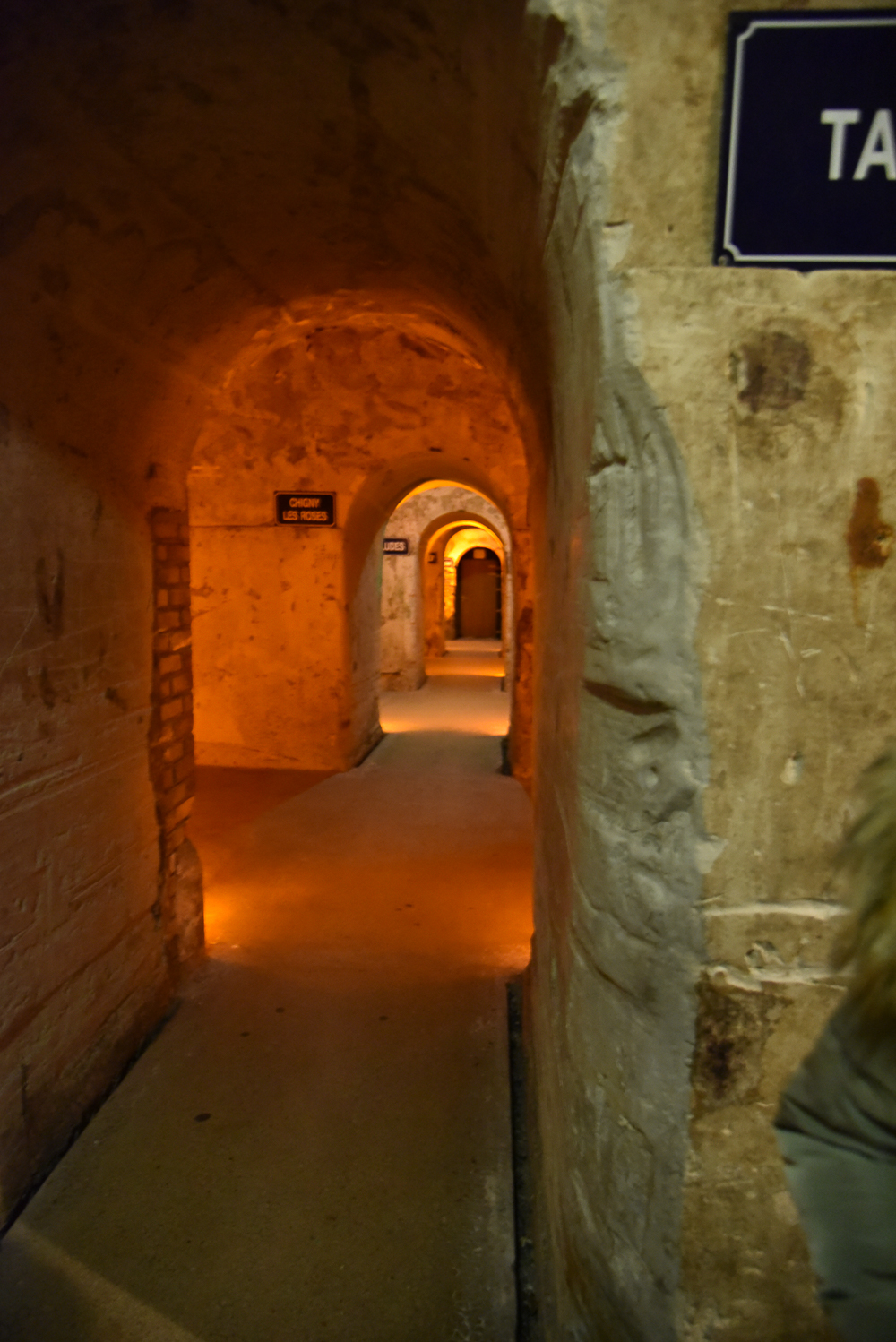
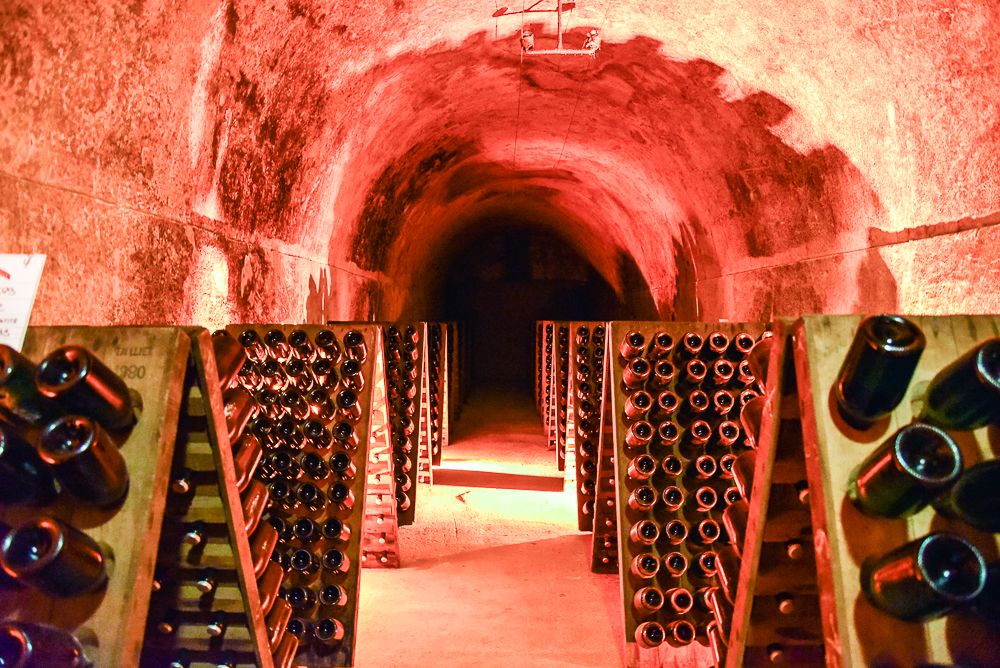
We next descended another seven metres into the wine caves, kept at around 10 degrees, the caves are kind of like a massive (and I mean massive) fridge. We were told that the cellars are 25 kilometres big and house 25 million bottles of champagne. The caves were very atmospheric and maze-like – it seemed very easy to get lost and with no phone signal I made sure I kept up well with the group. Though if I did get lost I could drown my sorrows in bubbles!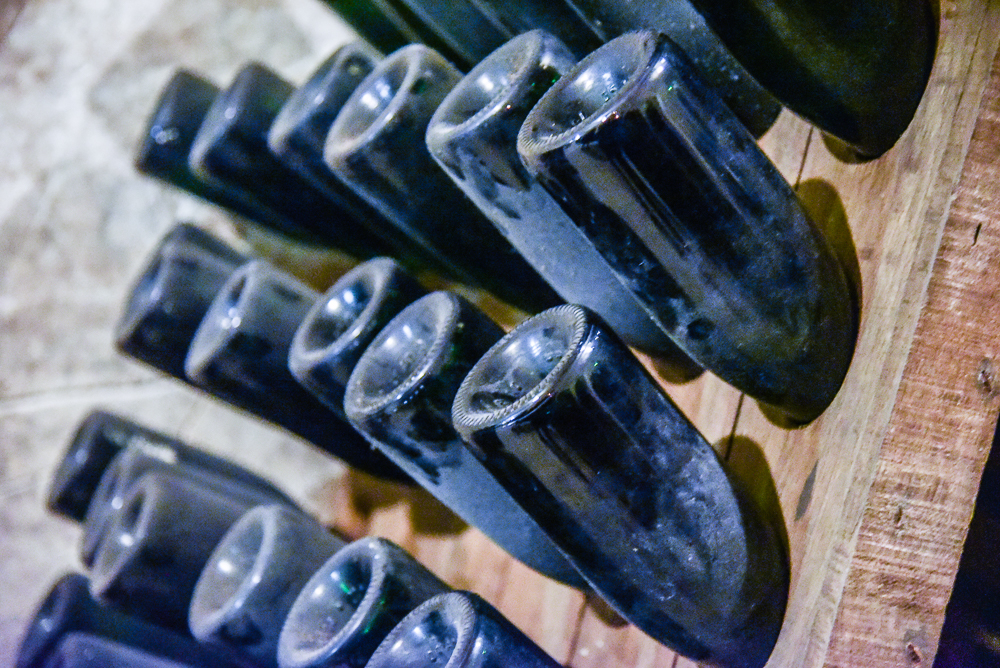
The still wine becomes champagne whilst in the cellars, after about a month bubbles are formed and after several months the wine matures and develops a richer taste. At Mumm the wine is aged for longer than is required in order to create an even better taste. For example, two and half years for their signature Cordon Rouge instead of eighteen months and a five-year maturation period for vintage wines rather than three years.
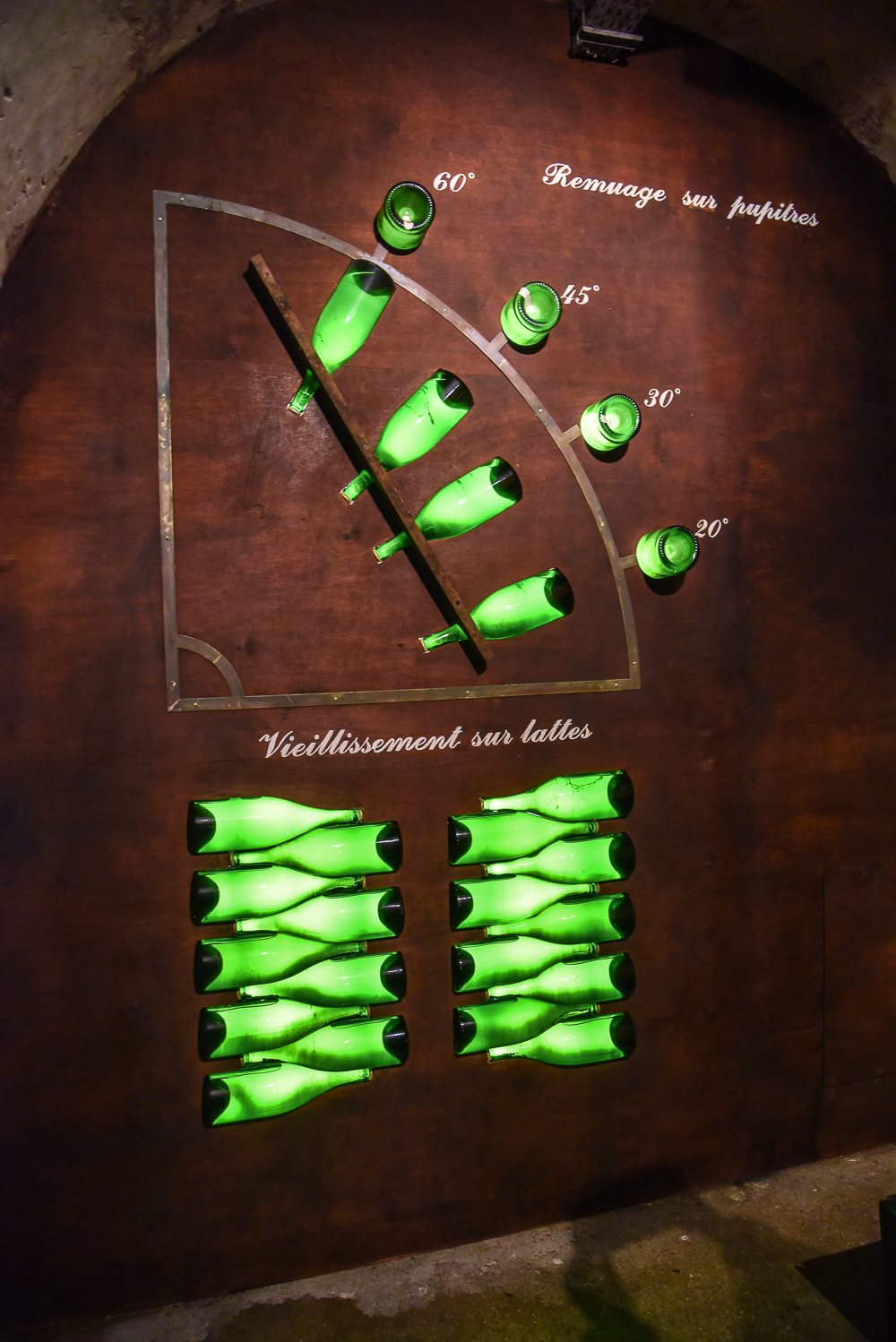
Once the ageing is complete the champagne goes through the riddling process which is the gradual rotating of the bottle in small increments so that the sediment collects in the neck of the bottle before it is disgorged. This process is sometimes done manually and sometimes by machine – can you imagine turning 25 million bottles of champagne by hand? The final step is adding the dosage, which is the amount of sugar added depending on the type of champagne; Brut or Extra-Brut, Sec or Demi-Sec.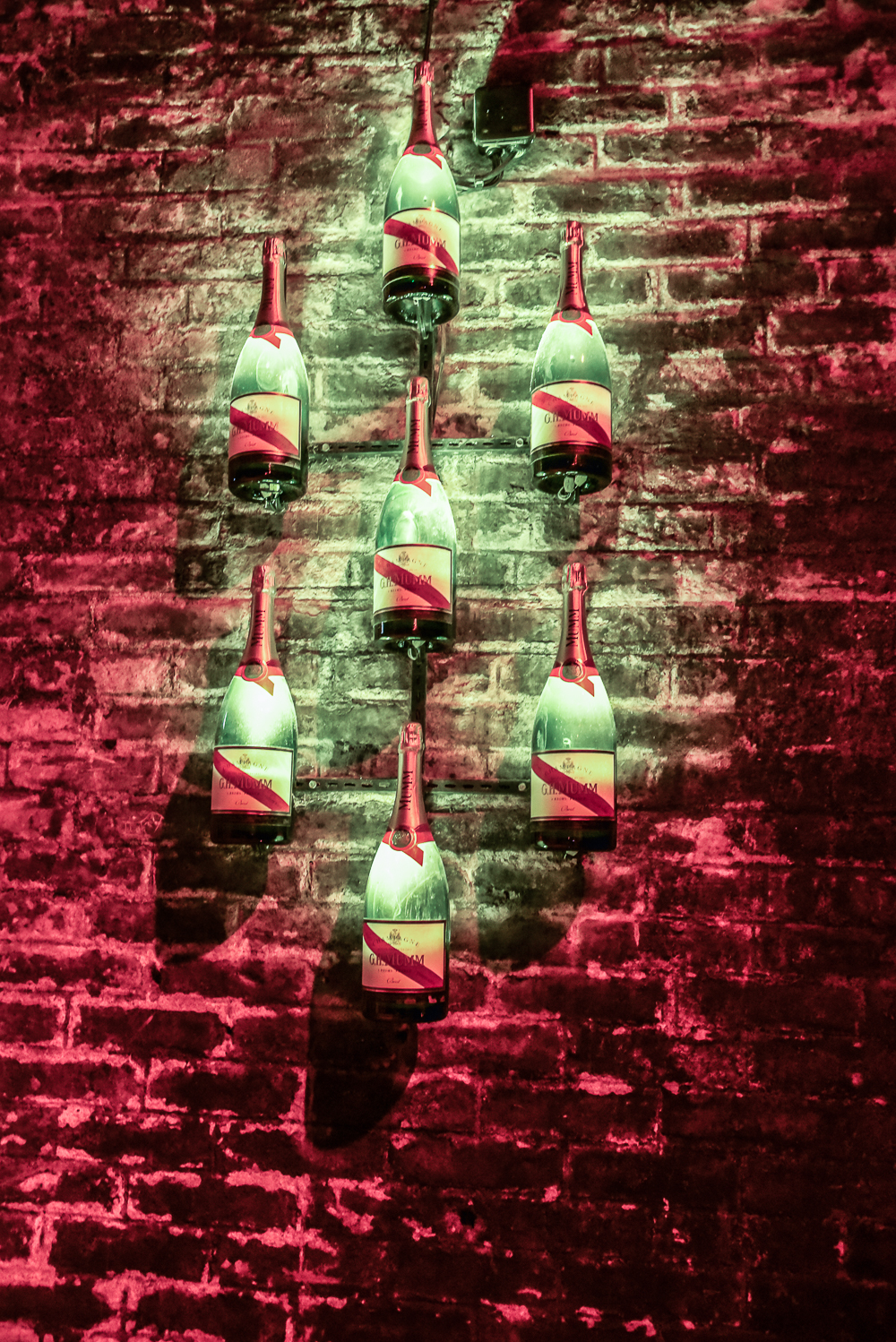
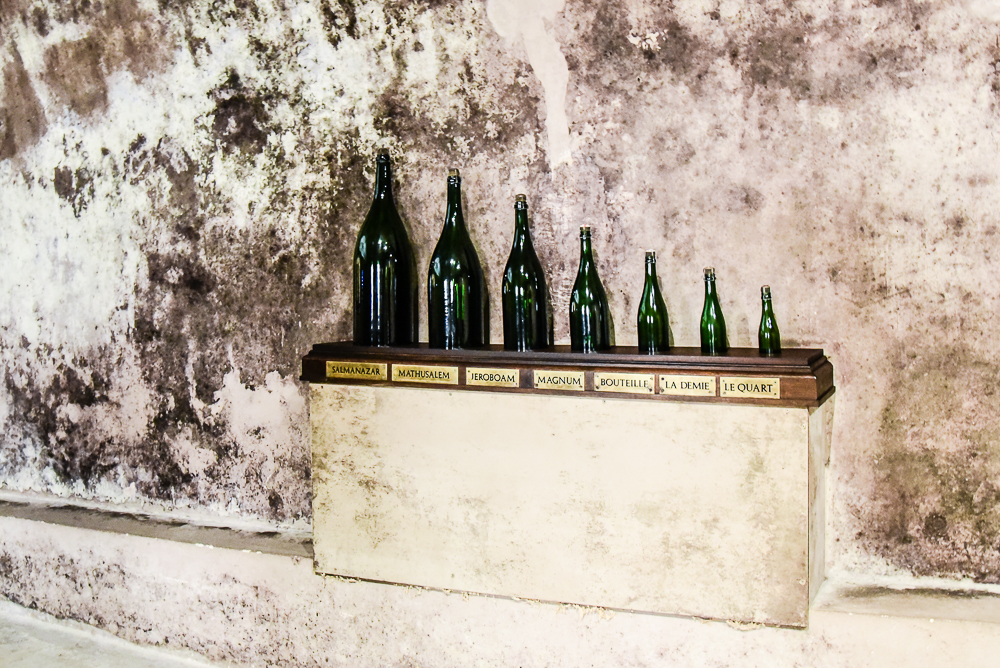
I was also interested to see the comparisons of the various sizes of bottle, doesn’t the standard seventy-five cl size look tiny compared to the Salmanazar which takes nine litres? And that’s not even the biggest!
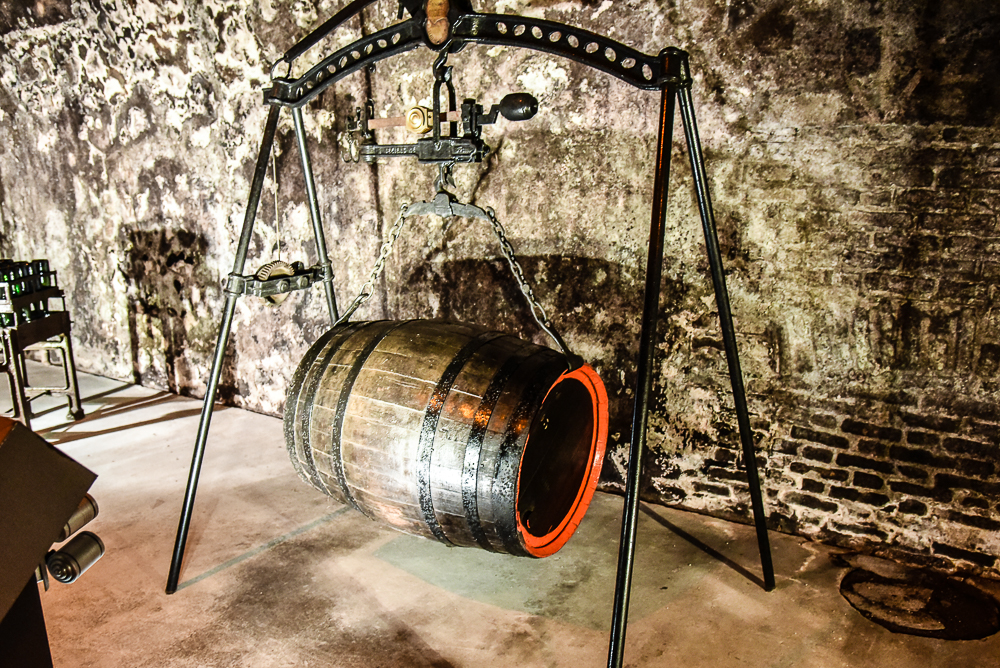
At the end of the tour was a small museum showcasing some of the old equipment that was once used in the process…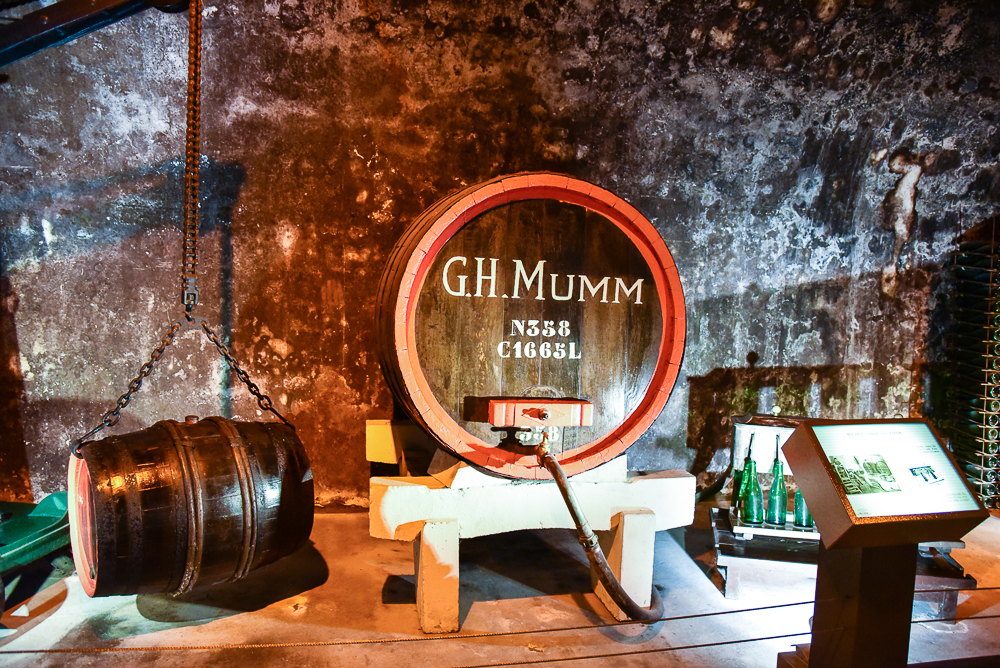
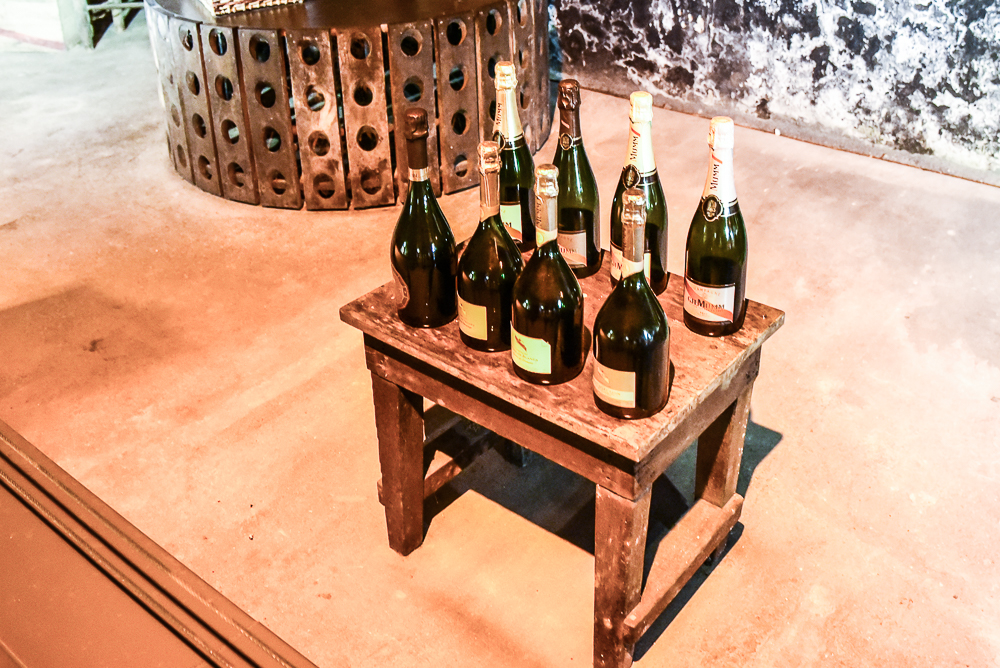
And a display of the current range produced by Mumm. But after our journey and enjoying the cellar tours, our appetites had been whet to try some of the wine. 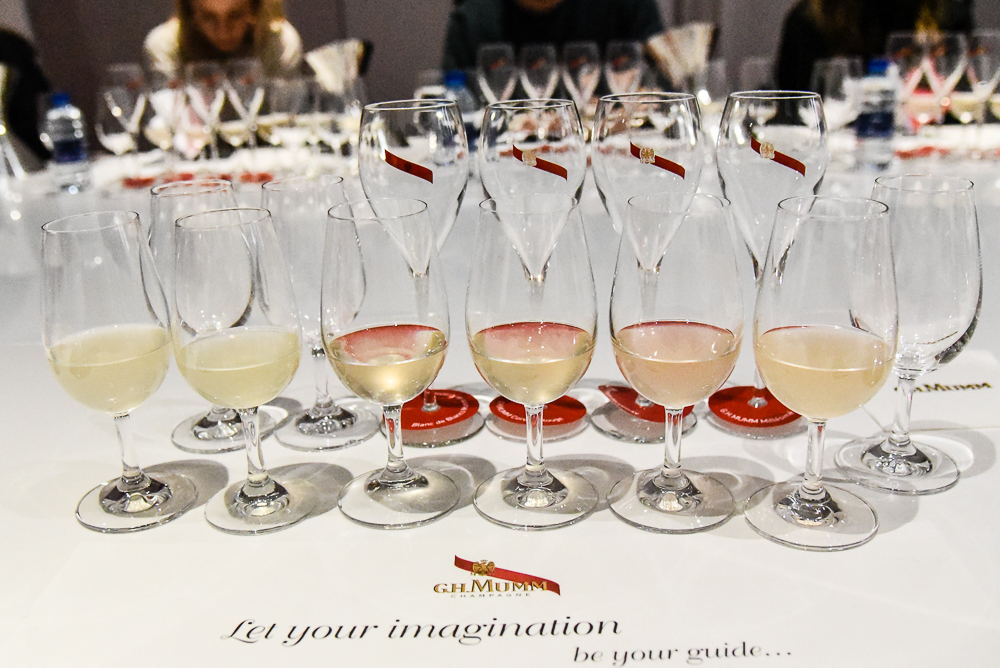
Upstairs in the tasting room we were introduced to Didier Mariotti, the cellar master who has been responsible for the wine-making at Mumm since 2006. Most of the Mumm vineyards are situated in the eight best Grand Crus (villages) in Champagne and each yields grapes with a different character. During fermentation all the crus and grape varieties are kept apart in order to preserve this character and as we tasted them we learned that wine from Cremant can taste very different to a wine made from grapes grown in Verzy.
We would first be trying the still wines produced after fermentation and before it becomes champagne. Didier explained to us that blending was one of the most important parts of the champagne process. It is the art of combining these still wines to create the highest quality champagnes that are the signature of the champagne house. Two thousand samples are tasted and up to seventy-seven different crus go into the Cordon Rouge Blend each year. We were encouraged to blend our own – mine tasted vile, obviously!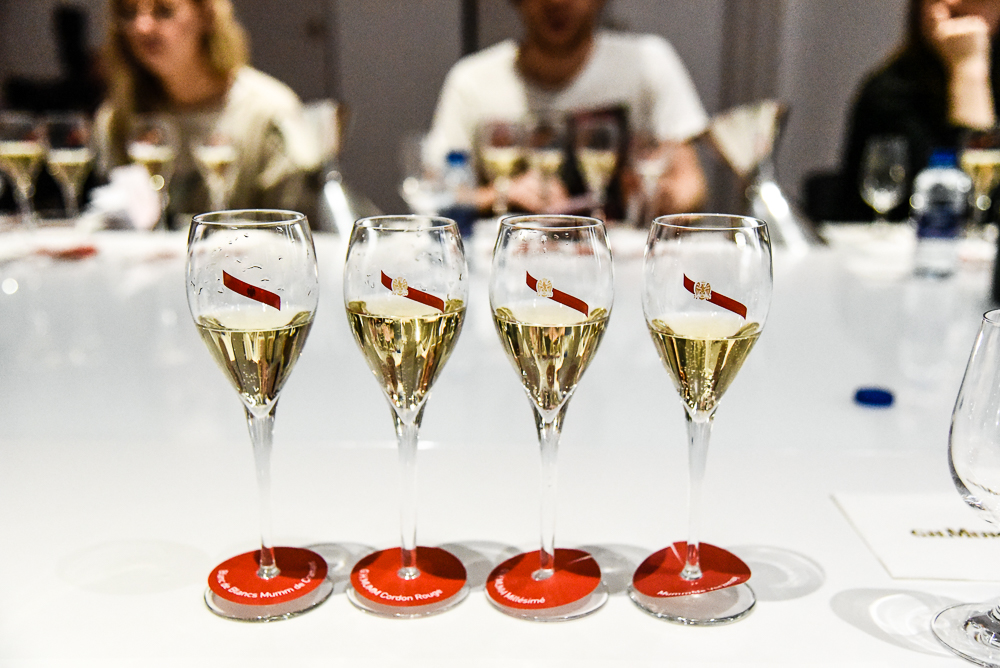
Now the bit I was really looking forward to…trying the champagne!
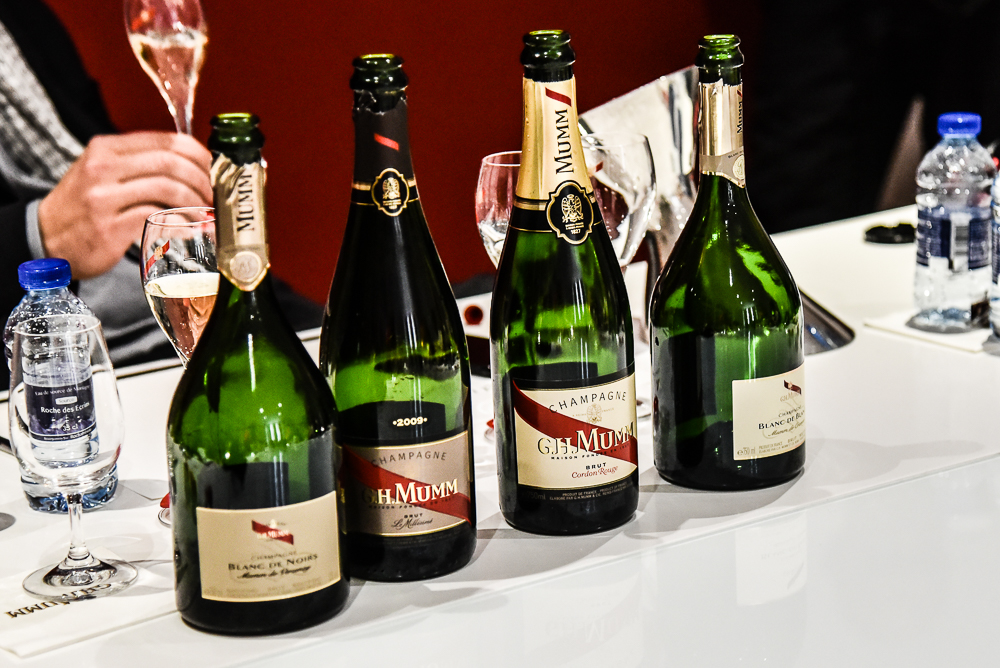
Each champagne had a subtle and distinctive flavour. The signature Cordon Rouge tasted peachy with notes of lychee and a scent of vanilla where the Blanc de Blanc had citrus notes. We also tried the latest creation from Maison Mumm, Mumm Vintage 2009 which was described as a very powerful wine which has been in development for five years. It has a sweet flavour of apricots with rich notes of vanilla, brioche and honey. We only had a little taster of the bubbly but there would be plenty more later. So we headed back to the hotel to freshen up – I won’t pretend that I wasn’t *slightly* disappointed that champagne didn’t swoosh out from the bathroom taps…but to be fair that probably wouldn’t be too practical for washing my hair.
Our group reconvened and we were driven up to the summit of a hill-top to Moulin de Verzenay, a windmill which would be the venue for a very special dinner that night. Sadly it was so windy I couldn’t get a decent picture of the windmill but it was certainly a fantastic location.
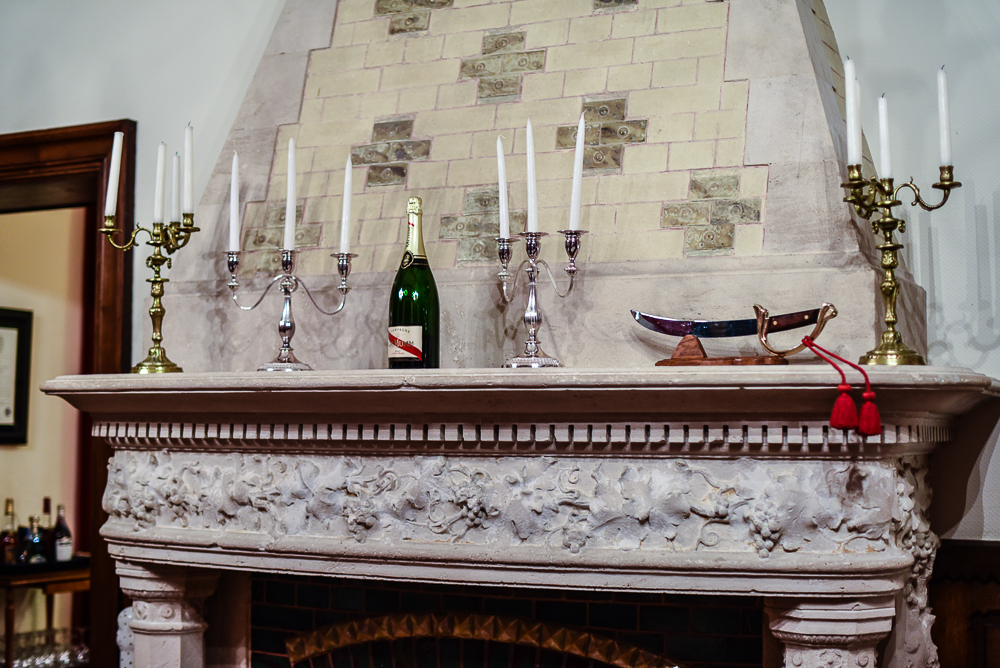
As well as learning about the champagne making process, our trip to Maison Mumm was also about discovering how pairing champagne with food can give even greater hedonistic pleasure. After another refreshing glass of Blancs de Blancs paired with some delicious canapés we were ready to try the menu created by the Maison’s own chef Joséphine Jonot.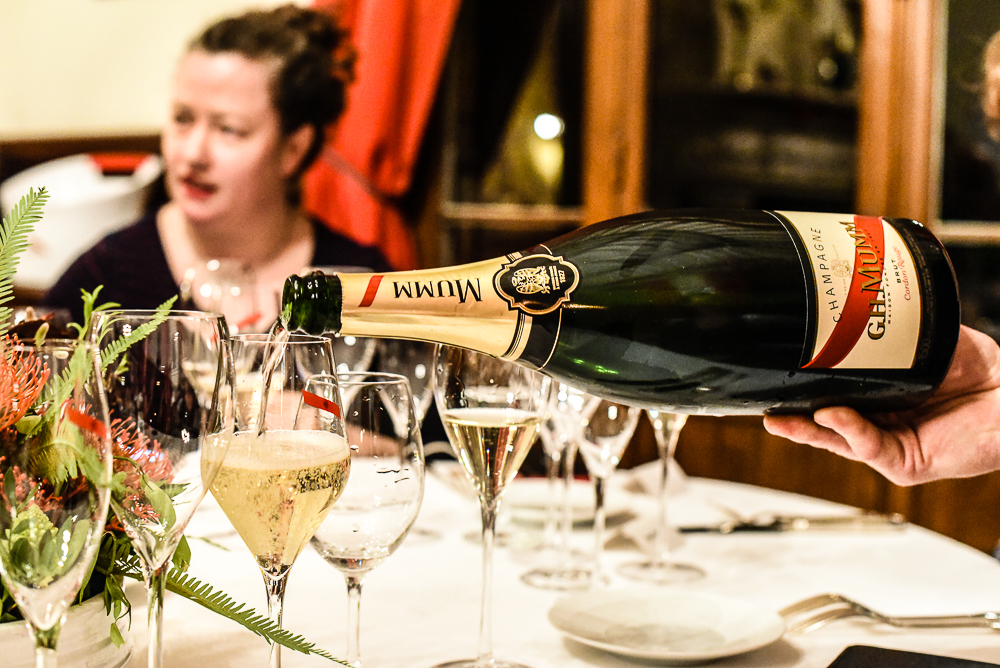
The whole experience was made even more exciting as each dish was a surprise and the ingredients weren’t revealed until later. All we knew was that we should be prepared for unique ingredient combinations prepared with innovative methods.
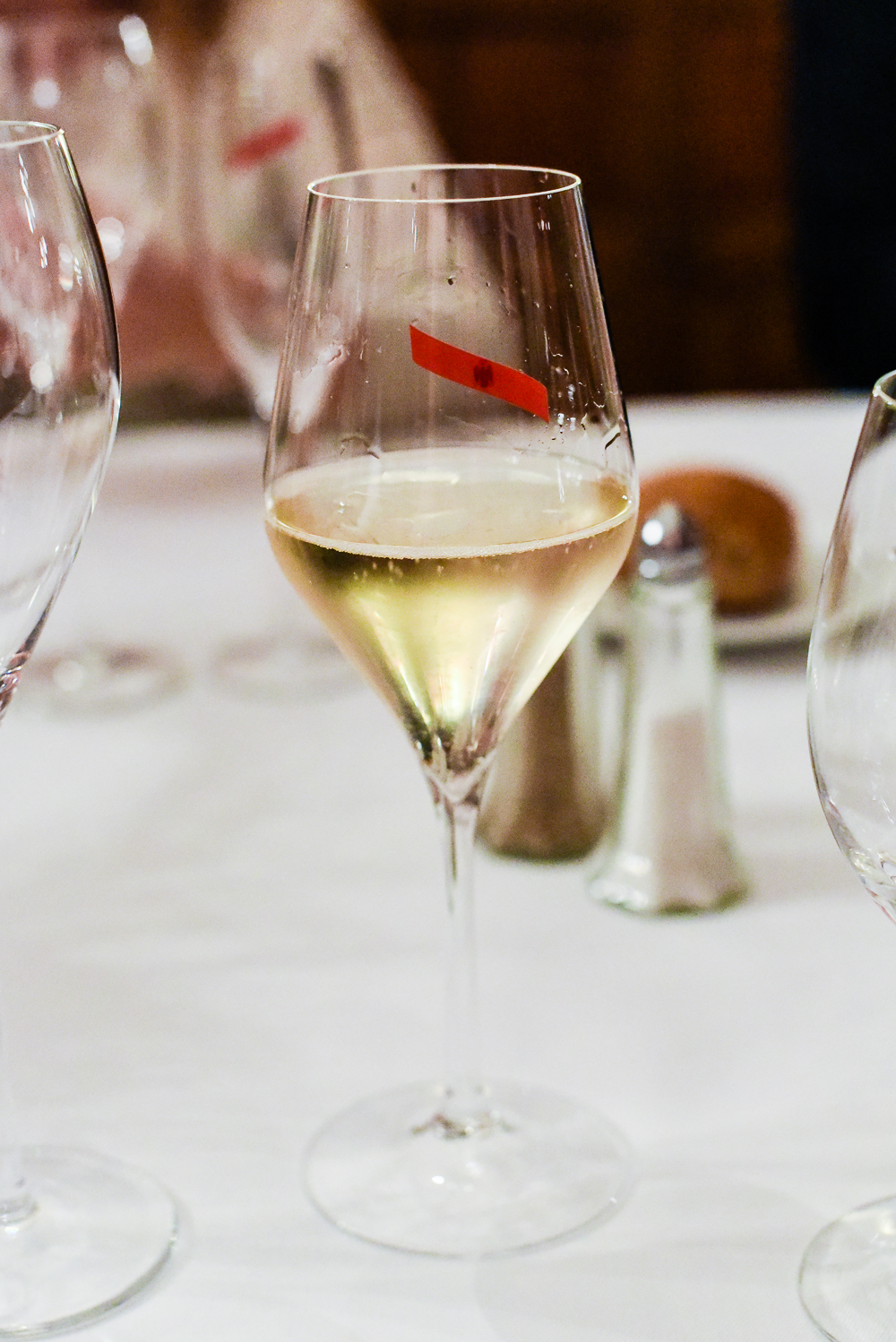
A glass of Cordon Rouge was poured to pair with the starter… 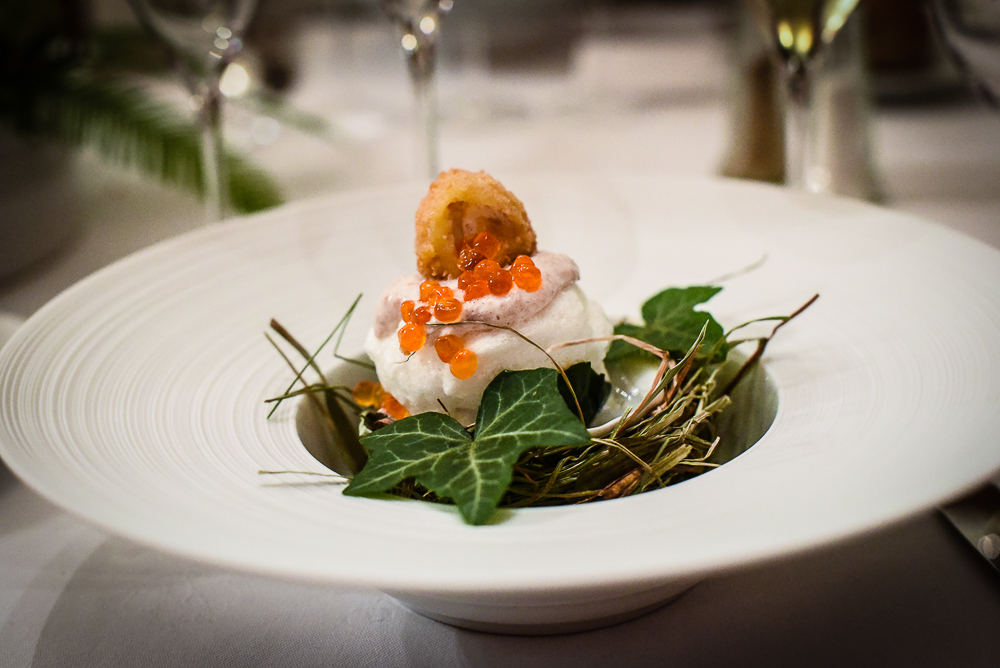
We tried to guess the ingredients of dish that was as light as air and paired beautifully with the crisp Cordon Rouge. A few different ideas were thrown out but later we discovered it was a crispy egg paired with a monkfish and liver mousse – something totally untraditional but completely delicious. 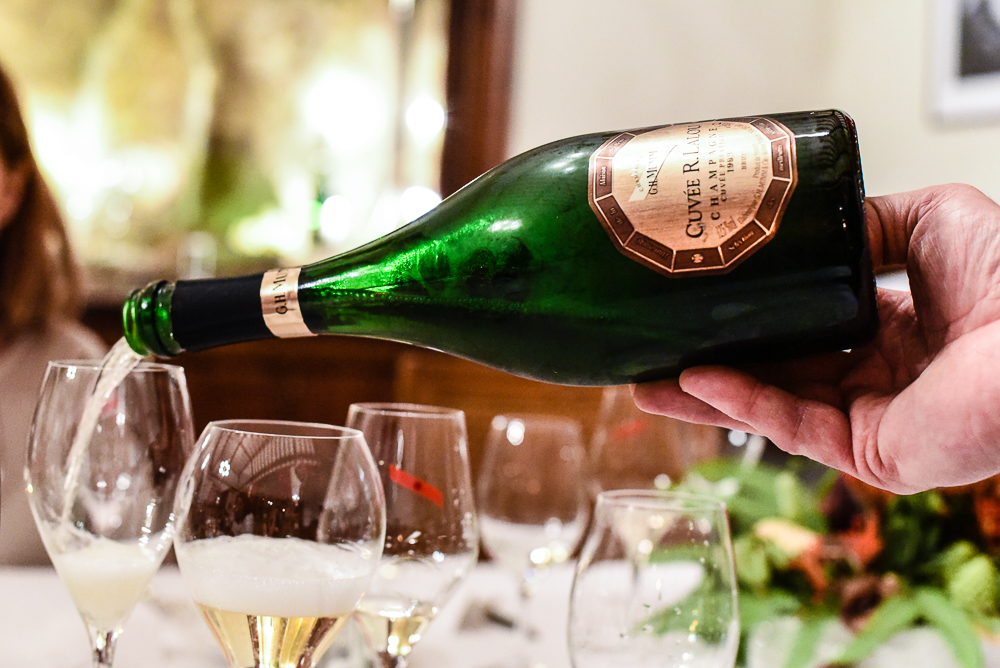
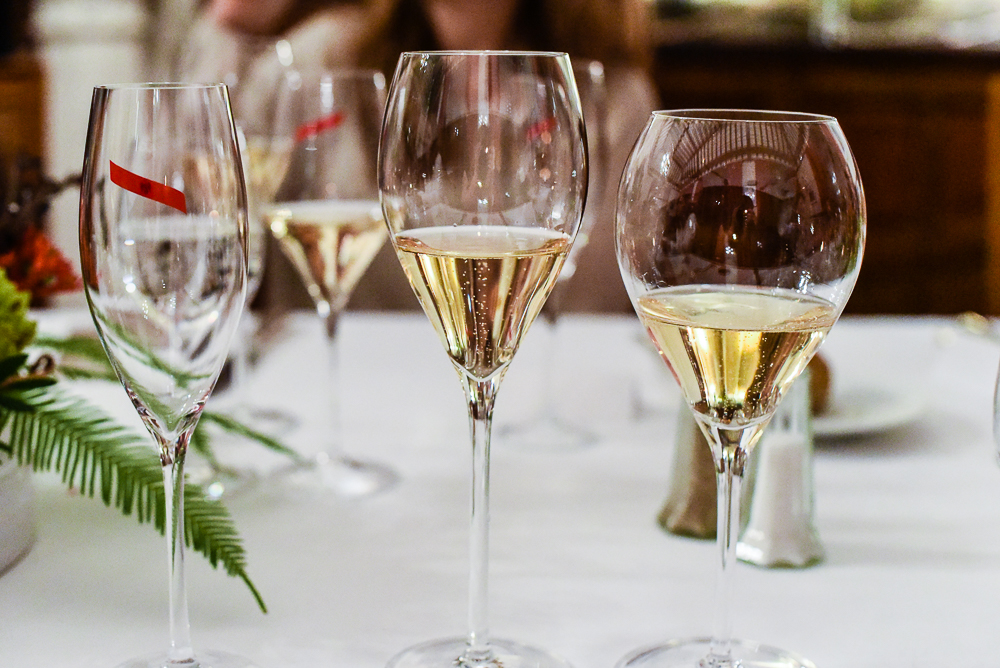
To go with the main course we were lucky enough to try Mumm Cuvée R. Lalou 2002, a rare prestige cuvée created only in exceptional vintages. The rare champagne glittered with gold and had a beautifully honied taste.
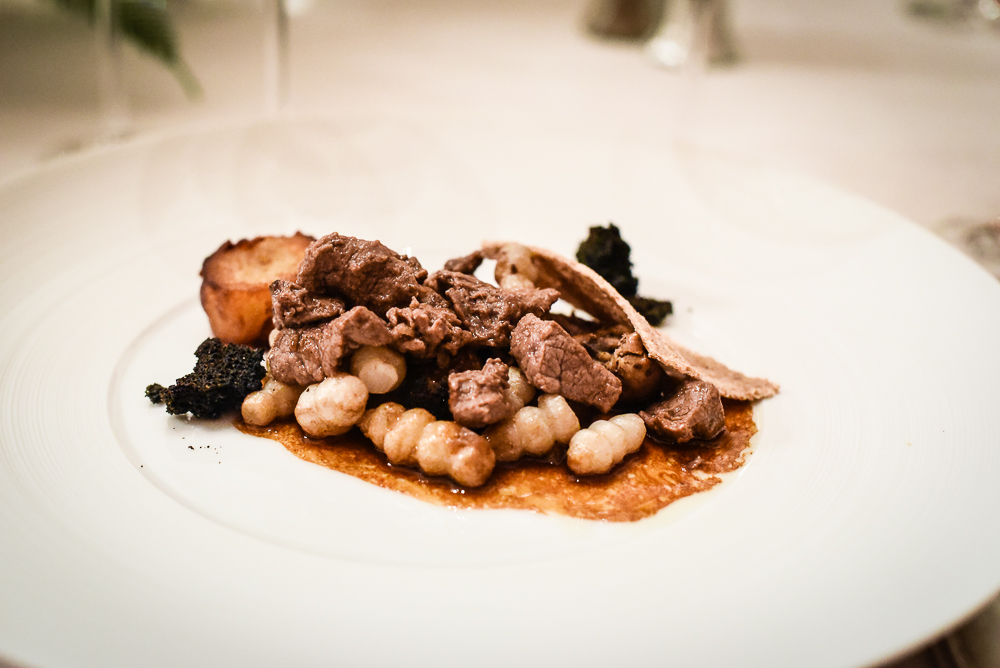
And it was paired with a robust dish of shredded beef and fried veal sweet breads and kidneys and the surprised addition of charcoal. The little vegetables that look like a grubs were actually Chinese artichokes.
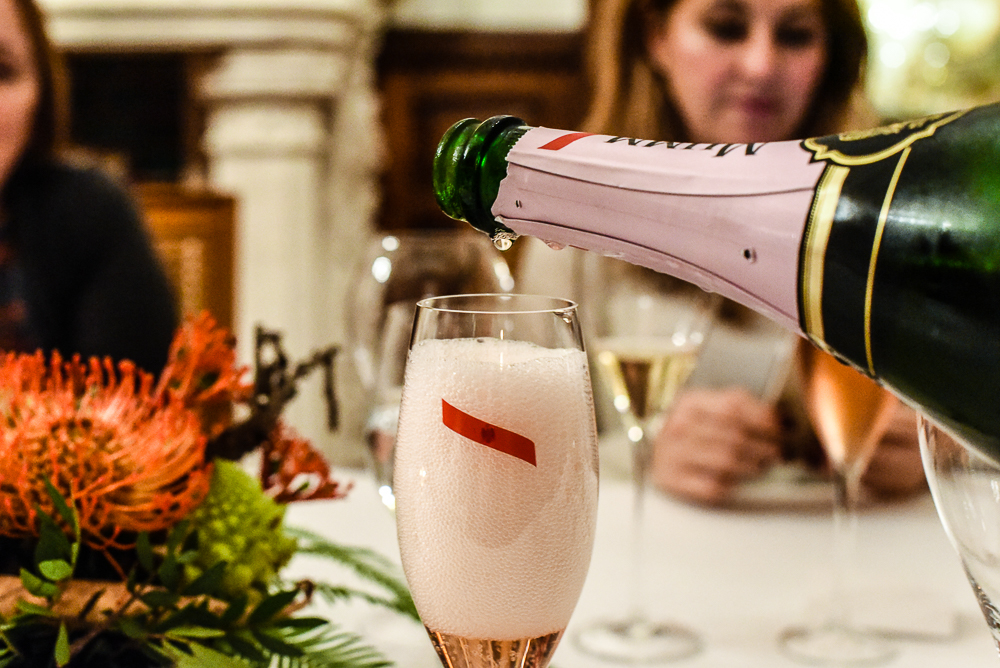
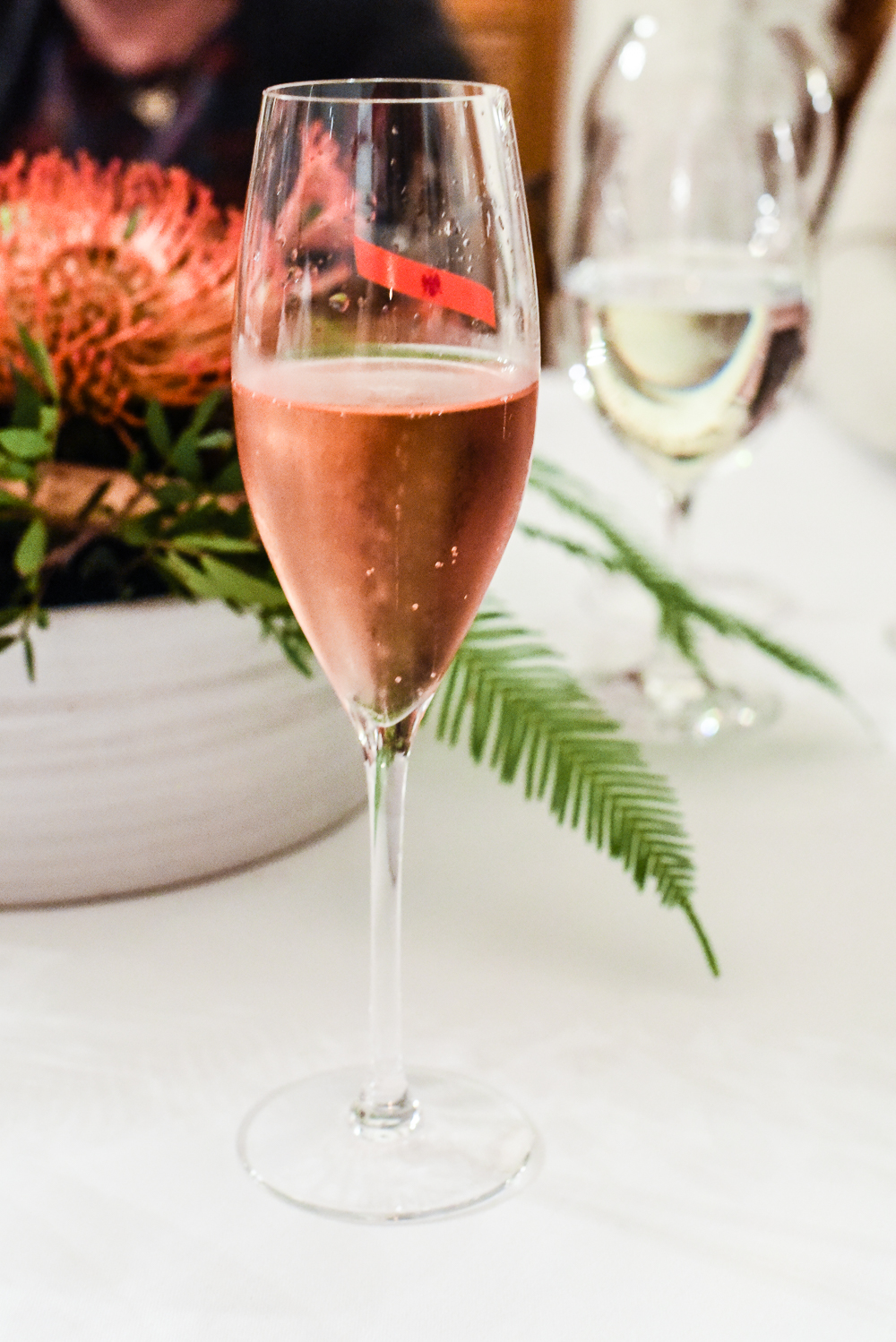
Finally, the Mumm Rosé with its beautiful salmon pink colour and taste of strawberry and red currant was paired with the dessert. 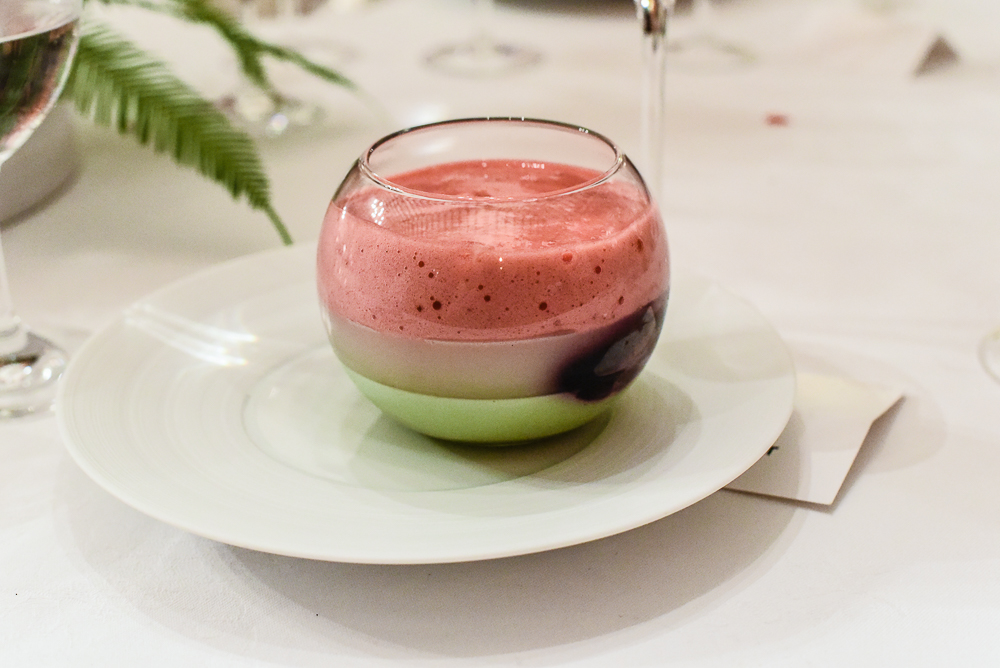
The flavours of the red fruit actually contrasted with the dessert known as ‘The fish in it’s bowl.’ A delicious dessert which was made up of a combination of textures including jelly, mousse, and frozen fruit. The little fish in the bowl was made with blueberry swimming in pannacotta with frozen lychee and pistachio making up the layers. 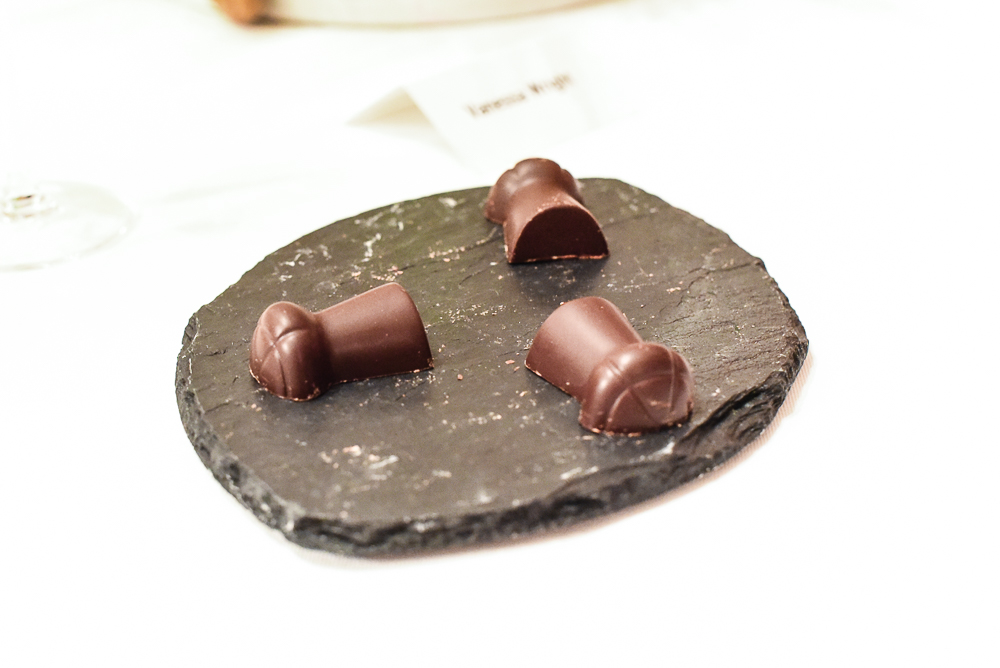
As we enjoyed coffee and chocolate truffles in the shape of corks, Joséphine came out to introduce herself. She served our whole group some incredible food almost single-handedly and it was amazing to meet such a talented chef.
And so ended our first day in Champagne and we headed back to the hotel for bed; eager for our next day in the beautiful land of fizz!
I was kindly hosted by Maison Mumm for this experience.

